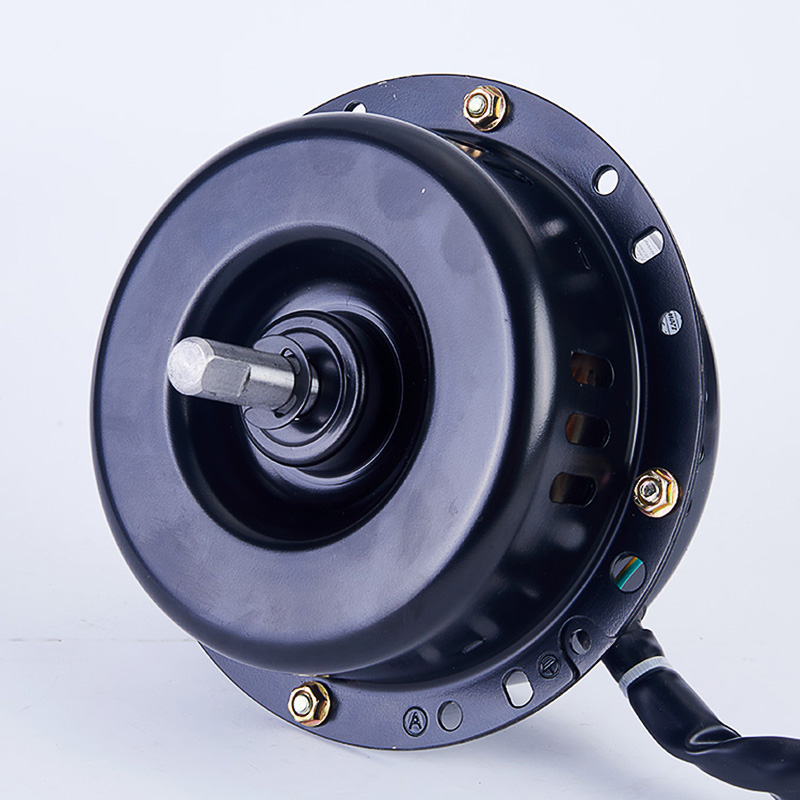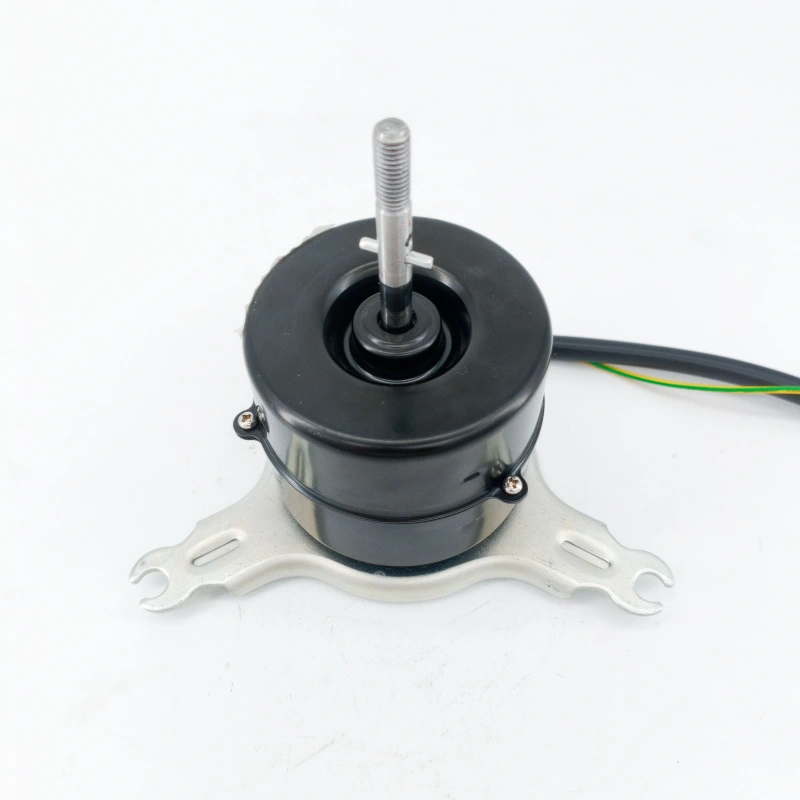The reason why AC motors dominate industrial drive scenarios lies in their comprehensive advantages in structural design, operational performance, control technology, and cost-effectiveness, which perfectly meet the core demands of industrial production for reliability, efficiency, and economy. This can be elaborated from the following four key dimensions:
(1) High Reliability Enabled by Minimalist Structure
The core advantage of AC motors (especially asynchronous AC motors) lies in their structural design without brushes or commutators. Their rotor consists of conductor bars and an iron core; when three-phase AC power is supplied to the stator windings, a rotating magnetic field is generated, which drives the rotor to rotate through electromagnetic induction. The entire transmission process involves no mechanical contact or friction. In contrast, DC motors require brushes and commutators to achieve current commutation, which not only causes brush wear and sparking but also necessitates regular maintenance and component replacement. In industrial settings, motors often need to operate continuously for thousands or even tens of thousands of hours. The contactless transmission design of AC motors significantly reduces their failure rate, extending the maintenance cycle to several years. This makes them particularly suitable for continuous operation in harsh environments such as mining, metallurgy, and chemical engineering. For instance, the blast furnace fan motors in steel plants and the rotary kiln drive motors in cement plants all rely on the high reliability of AC motors to achieve year-round uninterrupted operation.
(2) Wide Speed Regulation Range and High-Efficiency Operation Characteristics
Industrial drive scenarios have highly diverse requirements for motor speed, ranging from low-speed constant-load operation (e.g., fans and water pumps) to high-speed variable-speed operation (e.g., machine tools and conveyors). AC motors can achieve smooth speed regulation in the range of 0-3000 rpm (or even higher) through variable-frequency speed regulation technology, with minimal efficiency loss during the speed regulation process. This characteristic stems from the fact that the speed of an AC motor is proportional to the power supply frequency (as per the formula: n = 60f/p, where f is the power supply frequency and p is the number of pole pairs). By adjusting the power supply frequency via a frequency converter, the speed can be precisely controlled—eliminating the need for complex armature circuit adjustments required by DC motors. Additionally, the efficiency curve of AC motors remains stable across a wide load range; under rated load, their efficiency can reach over 90%, and some high-efficiency models even exceed 95%—far higher than the energy efficiency level of traditional DC motors. This translates to significant energy savings in industrial production. For example, chilled water pumps driven by variable-frequency AC motors in central air-conditioning systems can achieve 30%-50% energy savings compared to traditional fixed-speed motors.
(3) Wide Power Range and Strong Adaptability
AC motors cover a power range from a few watts to hundreds of kilowatts, meeting the needs of diverse industrial scenarios: low-power AC motors (e.g., below 10W) are used to drive fans and curtains in smart homes; medium-power motors (10kW-100kW) are widely applied in general machinery such as machine tools, conveyors, and compressors; and high-power motors (above 100kW) are suitable for heavy-duty equipment such as ship propulsion systems, power plant boiler induced draft fans, and metallurgical rolling mills. This ability to cover a wide power range stems from the scalability of their structure—power levels can be flexibly adjusted by increasing the number of stator winding turns, expanding the iron core size, and optimizing the pole pair design. Moreover, the manufacturing process for high-power AC motors is mature, with controllable costs. Furthermore, AC motors can be adapted to different power supply types (e.g., three-phase AC and single-phase AC), and some specially designed AC motors can operate stably in extreme environments such as high temperatures, low temperatures, high humidity, and dusty conditions—offering far greater adaptability than DC motors.
(4) Cost Advantages and Mature Technology
From a manufacturing perspective, AC motors have a simple structure, with core components including only the stator, rotor, bearings, and housing. They do not require precision components such as commutators and brushes (which are essential for DC motors), resulting in relatively simple processing techniques. When produced in batches, their cost is significantly lower than that of DC motors with the same power rating. For example, the manufacturing cost of a 10kW AC motor is approximately 60%-70% of that of a DC motor with the same power. From an operation and maintenance perspective, AC motors are free from issues such as brush wear and commutation sparking; daily maintenance only involves regular checks of bearing lubrication and cleaning of housing dust, with maintenance costs less than 1/3 of those for DC motors. Meanwhile, the control technology for AC motors is mature, and the prices of supporting equipment (such as frequency converters and soft starters) have decreased year by year—further lowering the threshold for industrial applications. Additionally, AC motors adhere to unified global production standards (e.g., IEC and GB standards), with a well-established supply chain and convenient spare parts procurement. This effectively reduces the risks associated with equipment replacement and operation and maintenance for enterprises.
Conclusion
The reason why AC motors have become the mainstream choice in industrial drive scenarios is the comprehensive integration of their advantages in structural reliability, speed regulation performance, power adaptability, and cost-effectiveness. Their contactless transmission design addresses the core need for continuous operation in industrial production; variable-frequency speed regulation technology adapts to diverse speed control scenarios; the wide power coverage meets the power demands of equipment ranging from micro-devices to heavy machinery; and mature technology with controllable costs further lowers the application threshold. With the development of new energy and smart manufacturing, AC motors continue to evolve toward higher efficiency, miniaturization, and intelligence, and will remain the core of industrial power in the future.




